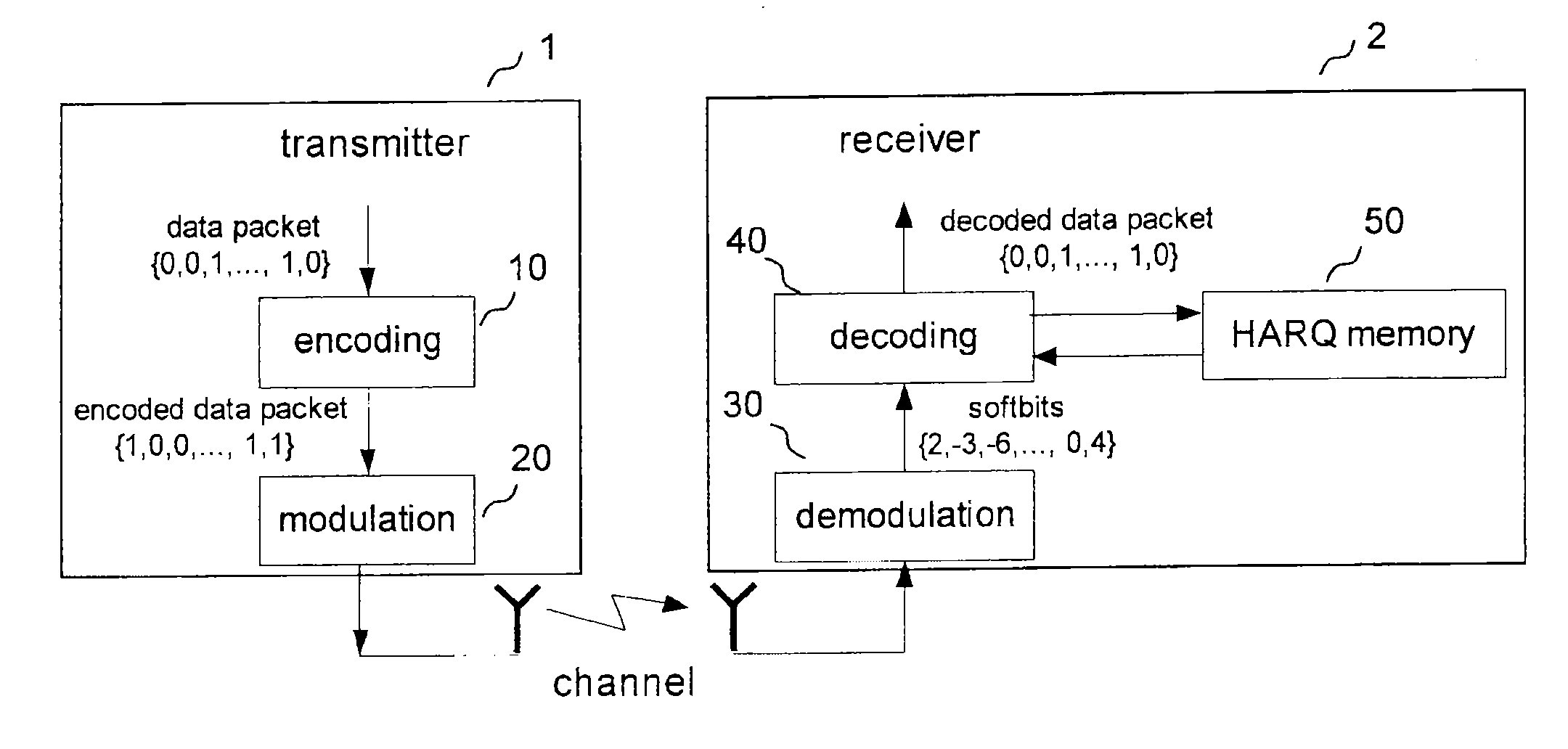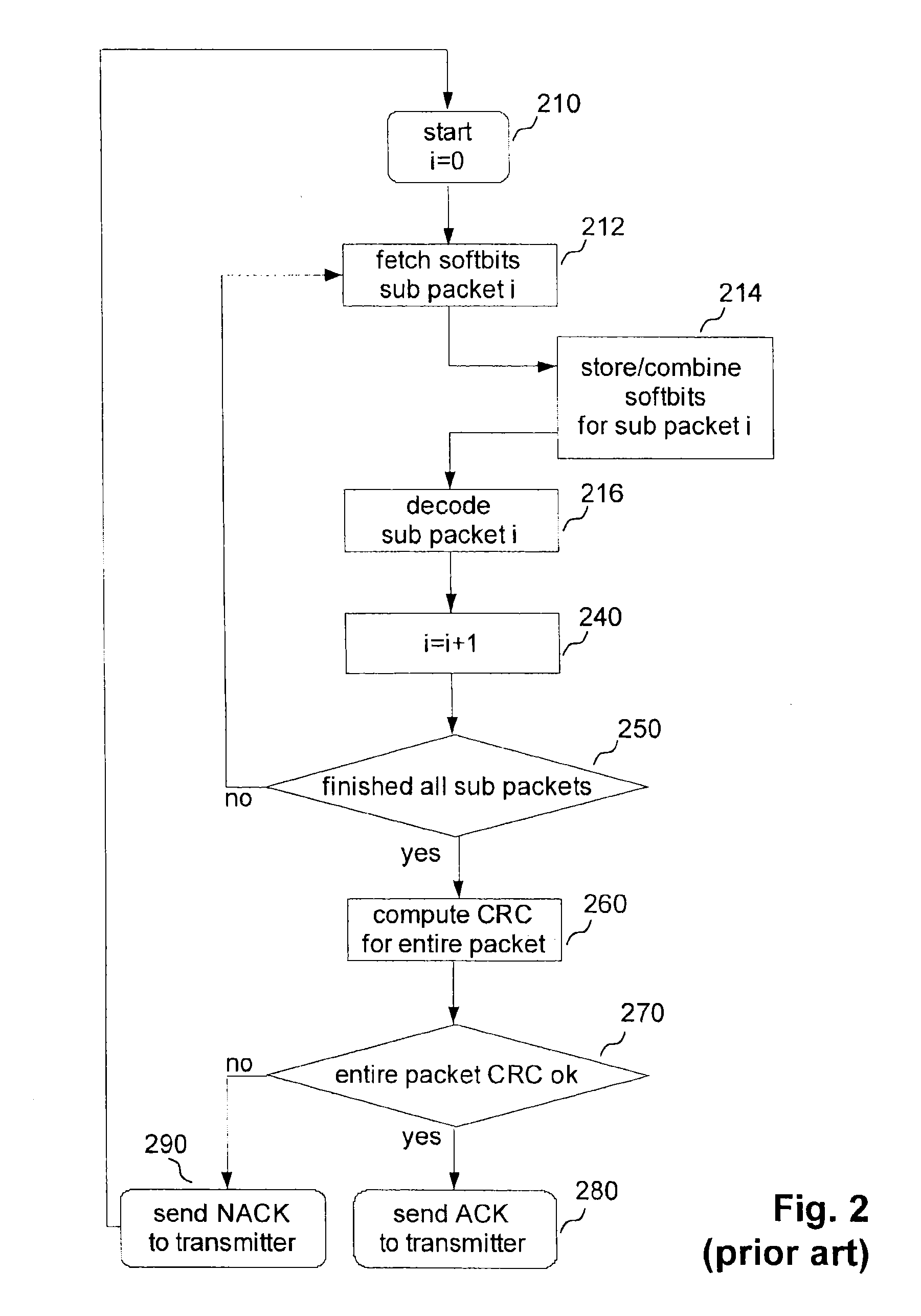Method for decoding data packets in a wireless communication system
- Summary
- Abstract
- Description
- Claims
- Application Information
AI Technical Summary
Benefits of technology
Problems solved by technology
Method used
Image
Examples
Embodiment Construction
[0022]FIG. 1 shows a model of a communication system in which the invention can be employed as comprising a transmitter 1 and a receiver 2 which are connected through a radio channel. In transmitter 1 subsequent data packets comprised of individual data bits are encoded (at 10) by some known encoding technique. As is known in the art, any of this encoding technique causes a multiplication of the bits of each packet, for example, turbo coding in LTE implies a tripling of the bit number. The encoded data packets are then modulated (at 20) by any known modulation scheme, and the modulated bit stream is fed to an antenna for transmission.
[0023]At the receiver's side the received bit stream is demodulated (at 30), and the receiver computes softbits for each received and demodulated bit (log-likelihood ratios), which represent a reliability measure for the received data packet. The sign of a softbit correspond to the likelihood of a demodulated bit being 0 or 1. The magnitude of a softbit...
PUM
 Login to View More
Login to View More Abstract
Description
Claims
Application Information
 Login to View More
Login to View More - R&D
- Intellectual Property
- Life Sciences
- Materials
- Tech Scout
- Unparalleled Data Quality
- Higher Quality Content
- 60% Fewer Hallucinations
Browse by: Latest US Patents, China's latest patents, Technical Efficacy Thesaurus, Application Domain, Technology Topic, Popular Technical Reports.
© 2025 PatSnap. All rights reserved.Legal|Privacy policy|Modern Slavery Act Transparency Statement|Sitemap|About US| Contact US: help@patsnap.com



